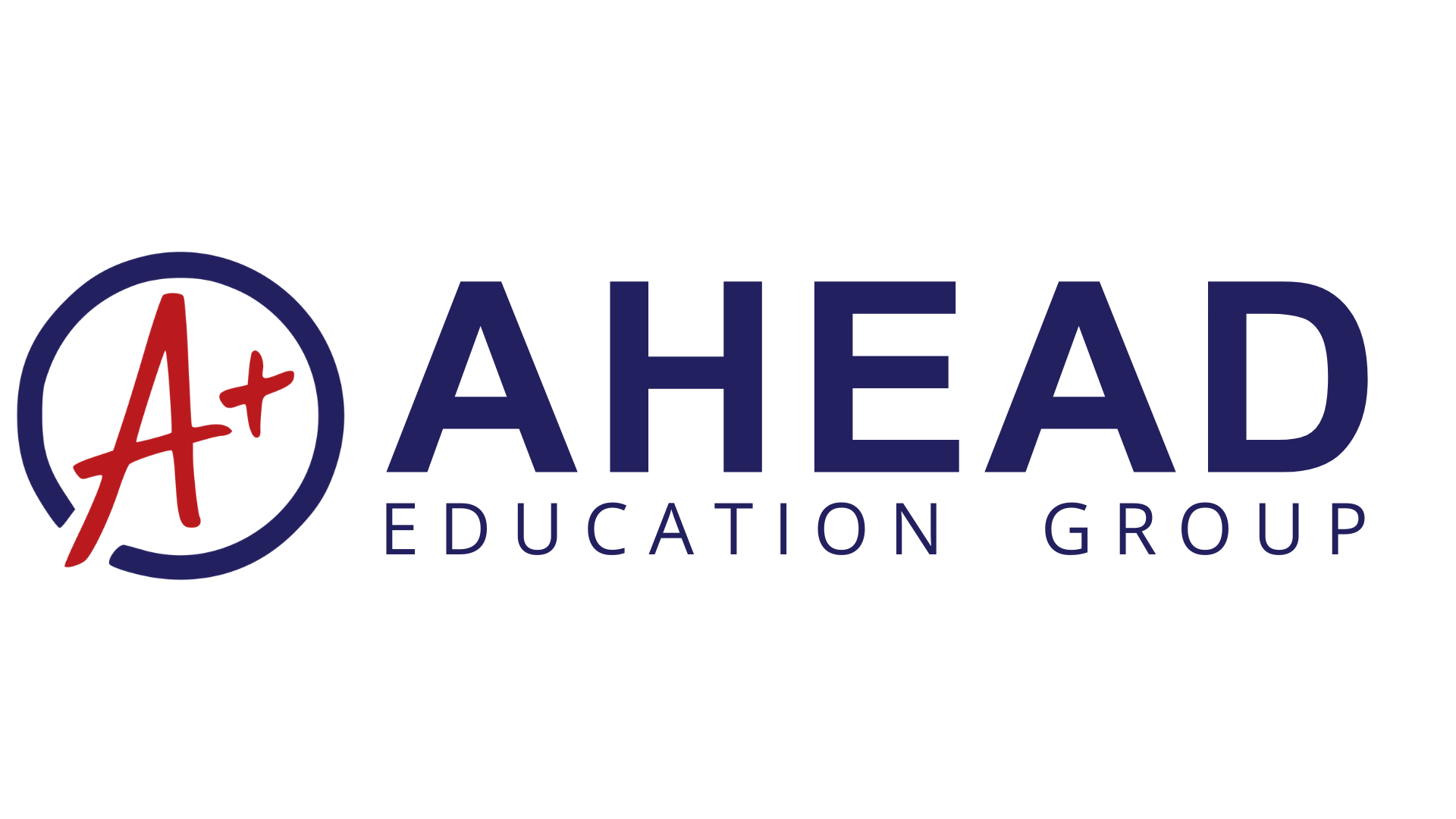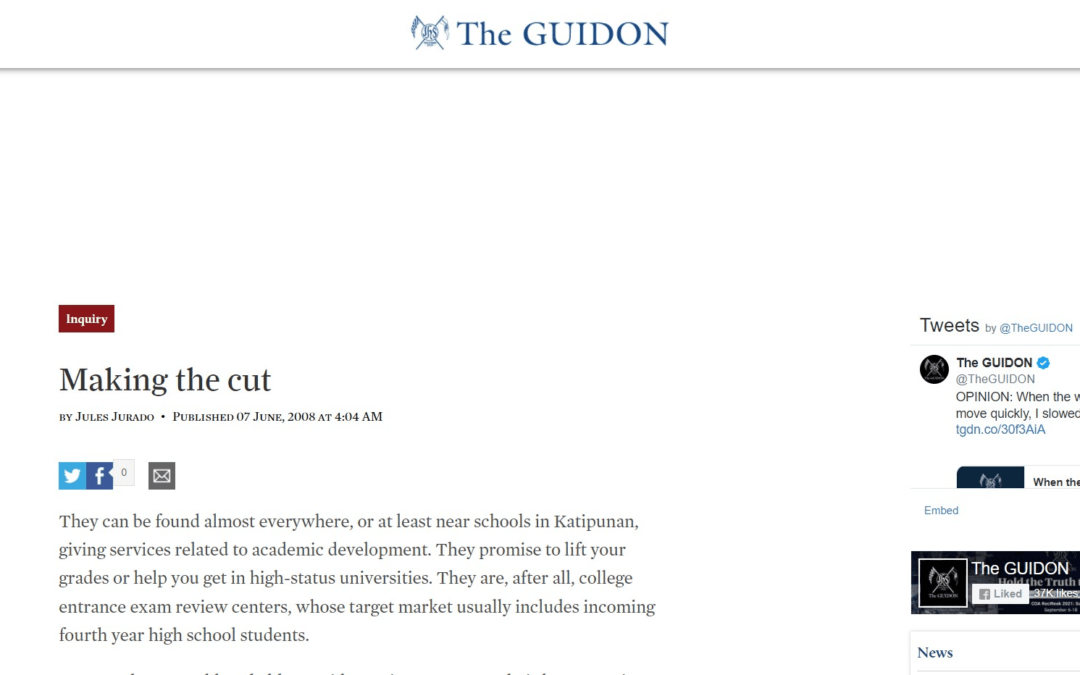by Jules Jurado • Published 07 June, 2008 at 4:04 AM
They can be found almost everywhere, or at least near schools in Katipunan, giving services related to academic development. They promise to lift your grades or help you get in high-status universities. They are, after all, college entrance exam review centers, whose target market usually includes incoming fourth year high school students.
Most students would probably consider review centers as their key to getting accepted into their dream school. There are students, however, who were able to get into the Ateneo without the help of a review center. So, how effective are review centers in getting their students into the Ateneo or in any other university?
The setting
Review centers usually offer about 20 sessions of lectures, refresher courses, and simulated exams, which would cost from P7,000 to P18,000, all in all. These sessions also include English, Math, and Science lessons, test-taking tips, and career orientations.
Class sizes range from as small as five, which employs the tutorial approach, to as big as 40 students. The schedule of these classes depends on which review center you enroll in. Some have Monday-Wednesday-Friday sessions while others have everyday sessions.
The lecturers in review centers usually come from Ateneo, La Salle, and University of the Philippines (UP). According to Magis Academic Mentors Operations Manager Nonoy Montes, parents first ask who their lecturers are and where they got their degrees.
“If parents want their children to get into Ateneo, they prefer that the lecturers graduated from Ateneo. If the parents want their children to get into UP, then the lecturer should be a UP graduate,” says Montes in a mix of Filipino and English.
The playing field
AHEAD Learning Systems Marketing Officer Angela Bautista says that in the past, colleges and universities in the Philippines held equal educational standards. A few decades ago, public schools upheld the same, if not better, educational values than private schools. But over time, as the economy declined, so did the standards of some schools.
The schools that had the money and the opportunity to keep fairly high standards became a favorite pool of potential employees for employers. Entrance to these schools became more competitive and review centers started to gain popularity. “Review centers are now seen as a need – something that will ultimately contribute to shaping a person’s future,” says Bautista.
Meanwhile, Montes says that students’ preference for quota courses makes this competition stiffer because students taking review classes are believed to have the advantage over the rest.
Aside from contributing to their students’ knowledge, review centers are also hoping to give them the confidence and support that they need to do well in the exams. Bautista adds that these centers want their students to develop a winning attitude that they can carry throughout their lives.
“With properly trained and experienced instructors, the students are guided accordingly in their review…in an environment without “distractions” that is specifically meant for studying and learning.”
Chain reaction
At first glance, entrance exams are given to measure a student’s preparedness for college work. Ma. Emma Concepcion Liwag, Ph.D., associate professor of the Psychology Department, views exams as a fair means for schools to accept students due to limited resources. While she acknowledges the help that review centers offer to their students, she thinks that they can defeat the purpose of entrance exams, which is to assess what the students learned during high school.
Also, it comes out as cramming, if not, artificial readying. “It does not level the playing field, but it gives unfair advantages, I think, to some people and so on,” says Liwag.
“What does it then say for those students who cannot afford these places?”
According to Bautista, review centers employ two methods of instruction. There is the comprehensive review method, which aims to discuss the concepts that the students learned during high school. Students under this method, however, might be overwhelmed by the four years’ worth of studies compressed in a few months of review.
The other method is the test-based review where the students are reviewed mostly on items that usually appear in entrance exams. “This allows the student to become more focused and less overloaded with unnecessary information,” she says.
But, according to Education Department Chair Ma. Celeste Gonzalez, Ph.D., high school education should be about developing the students’ skills and not about teaching them based on the entrance exams’ content. Academic testing, therefore, should reflect whether the students actually learned from their teacher.
“If you would tell a high school teacher, ‘You should teach Biology this way so that he would be able to answer the questions on biology in an entrance test,’ that is so wrong,” Gonzalez says.
“What is important is that you teach your students the content and the skills needed to be able to cope with college work.”
A question of standards
Not all schools have the same secondary curriculum, says Montes. A particular school may specialize in the sciences, while another school may specialize in language proficiency, among others. Also, the high school teachers’ skills may vary from poor to excellent. Because of these disparities, review centers aim to give an equal chance for their students to get into their chosen university.
“Even if your student is great, even if he is smart, [it really] depends on what you teach him or her,” he says in a mix of English and Filipino.
“[That’s why] At the very least, we level out the playing field for the entrance test. That’s the purpose of tutorials because some schools just don’t fare well in this subject.”
But, Ateneo de Manila High School (AHS) Principal Fr. Raymund-Benedict Hizon, SJ says that review centers cannot claim to level the field of entrance exam takers without saying that they could supplement what the students learned and solve the problems they have.
“They’re like remedial centers … they’re not review centers,” he says.
“What is a review? You basically re-view, you look back at things which you supposedly have learned. If not, your learning is supplemented or remediated by review centers.”
Under pressure
Despite the steep costs, parents still encourage their children to enroll themselves in review centers.
Liwag believes that, to a certain extent, parents feel the competitive aspects of today’s college admission drama. Given the focus on choice universities, she believes that enrolling one’s child in a review center is part of a natural parental instinct to hope for the child’s best.
But not everyone banks on the services that review centers offer.
Save for a one-time sample test, all Lucy Fischer (I AB Comm) did in preparation for the Ateneo College Entrance Test was out of personal effort.
“I think that the best way to learn is through experience, when you’re doing it,” she says.
Test-wise, she believes that what is necessary to hurdle a test is a grip on “the basics of everything”, or the language and math, among others. Personal confidence is also an important factor for her in this case, be it coming from oneself or from one’s parents.
“The thing is, doubting yourself from the beginning doesn’t help at all,” she says.
Development
Ateneo Parent Relations and Programs Director Fr. Alberto Ampil, SJ says that entrance exams should be a matter of standards. A former AHS Principal, he believes that it should be the state that should decide on how high or low the standards are.
“Entrance exams in a sense tell people this is how high the bar is. If you can jump this bar, you are okay,” he says. “And it is the responsibility of those who hold the bar to keep raising it.”
Bautista believes that the key to passing any college’s entrance examination is through preparation. A student may have a magnificent academic record, but it will still be the exam scores that will ultimately matter.
“The college or university that a person attends will determine the kind of friends he or she will be with for four or more years, the people who will become part of her personal network, the set of values that he or she will be immersed in, and the principles he or she will be upholding throughout her life,” she says.
Liwag agrees with Ampil in saying that the sudden popularity of review centers may possibly reflect a hidden truth of today’s educational system. Study and test preparation skill, she says, are things that should have been taught in schools anyway. In this sense, students really need not go to these centers if they know they have the skills to hurdle that test.
“If this is like a wake-up call to schools… [they] should really also examine what they are doing in terms of teaching students beyond content,” she says.
“[It’s just] very puzzling; but at the same time, it’s a reality.”
By the numbers
Review centers don’t come cheap. Below is a list of rates of the services that review centers along Katipunan offer.
AHEAD
– P11,900 with a discounted price of P8,960 during the summer
– Includes 19 sessions (four hours per session), six test simulations and free refresher courses
– Maximum of 40 students per class
LSC
– P6,500 for 48 hours’ worth of UPCAT review only
– P5,000 for 32 hours’ worth of ACET review only
– P10,000 for 72 hours’ worth of both UPCAT and ACET reviews
MAGIS
– P5,500 if you enroll in January, P6,000 in February, P7,000 in March and P7,500 in April and May
– Includes 15 sessions (60 hours) of lecture, four sessions (16 hours) of UPCAT refresher and four sessions (16 hours) of ACET refresher
MSA
– P12,000 per student (Comprehensive Entrance Tests Preparation or CETP)
– P18,000 student if he enrolled in the CETP tutorial approach
– Inclusive of 15 reviewer books
EXPERT GUIDES
– P7,300 with a discounted price of P6,800 if you enroll in groups of five from January to March
Includes 104 hours’ worth of sessions and modules on English/Filipino, Math, Science, General Intelligence + Career Orientations and Test-taking Tips

